
Below you will find a collection of fact sheets, content essays, and stories from our explorers on board seamounts expeditions featured on the OceanExplorer.NOAA.gov website.

Fact Sheet. Seamounts rise high off the seafloor, much like mountains do on land, though most are remnants of extinct volcanoes. To be classified as a seamount, the feature must rise at least 1,000 meters (3,300 feet) above the surrounding seafloor.
Read more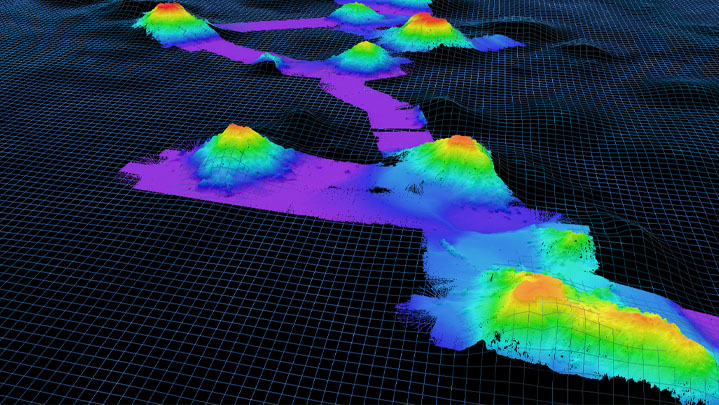
Fact Sheet. Seamounts are underwater volcanoes found in every ocean. They can form in different ways, but most are remnants of extinct volcanoes. Seamounts are generally found at mid-tectonic plate regions, called hotspots, and near the boundaries of tectonic plates.
Read more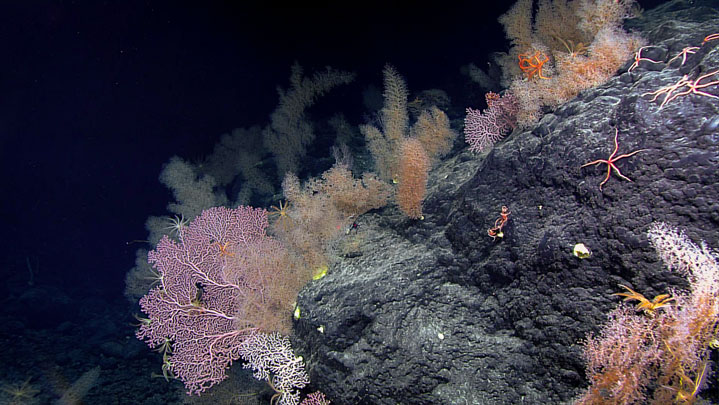
Fact Sheet. Seamounts are hotspots for biodiversity in the deep-sea. They provide a hard substrate for deep-sea organisms to live on and interact with currents driving nutrients up from the seafloor.
Read more
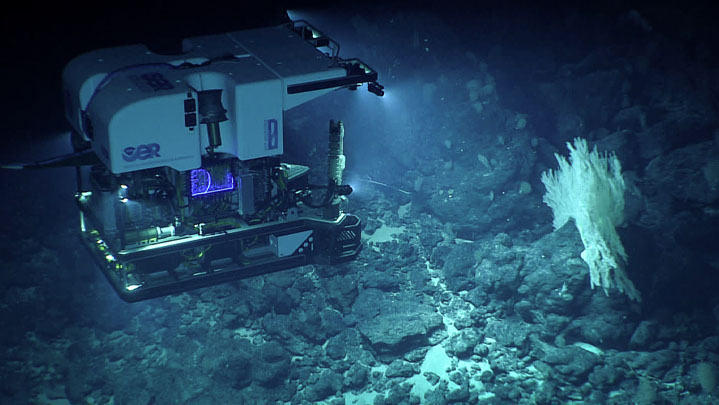
Exploration Note. When NOAA Ocean Exploration explored the Musicians Seamounts, north of the main Hawaiian Islands, they found a high diversity of organisms living on the seamount and in the water column above.
Read more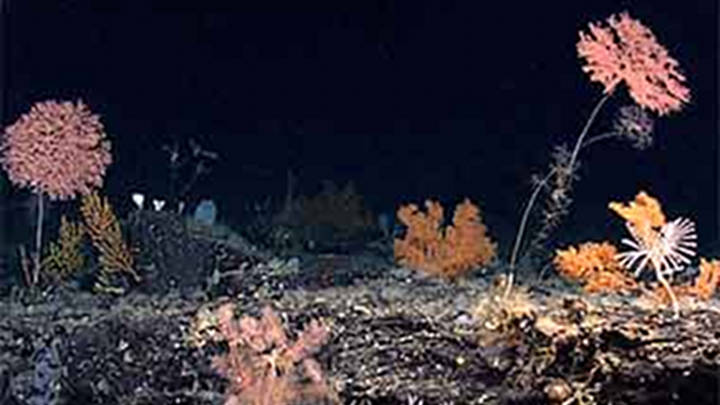
Ocean Exploration Fact. With structure for animals to settle and live on and currents supplying food and nutrients, the variety of life, or biodiversity, at seamounts is often rather high.
Read more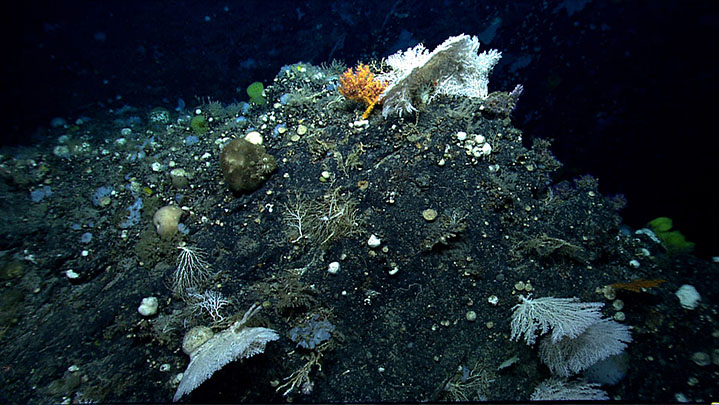
From the 2021 North Atlantic Stepping Stones expedition. The New England and Corner Rise seamount chains comprise a line of extinct submarine volcanoes that extend from near the Mid-Atlantic Ridge to the eastern continental margin of the United States.
Read more
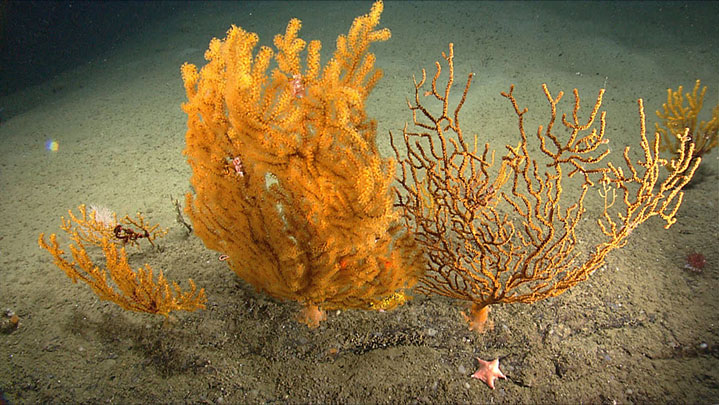
From the 2021 North Atlantic Stepping Stones expedition. Northeast Canyons and Seamounts Marine National Monument Superintendent Brittany Petersen answers questions about this mysterious and fascinating place.
Read more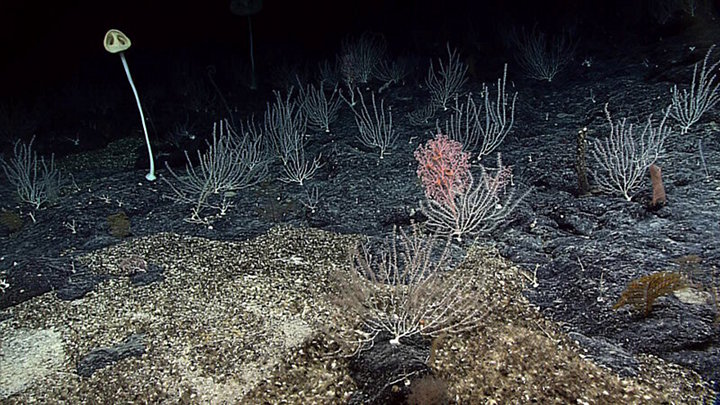
Marine biogeographers examine the historical, geological, ecological, and environmental factors that influence the distribution of life in the ocean. This research helps to explain why species are found in particular places and not in others.
Read more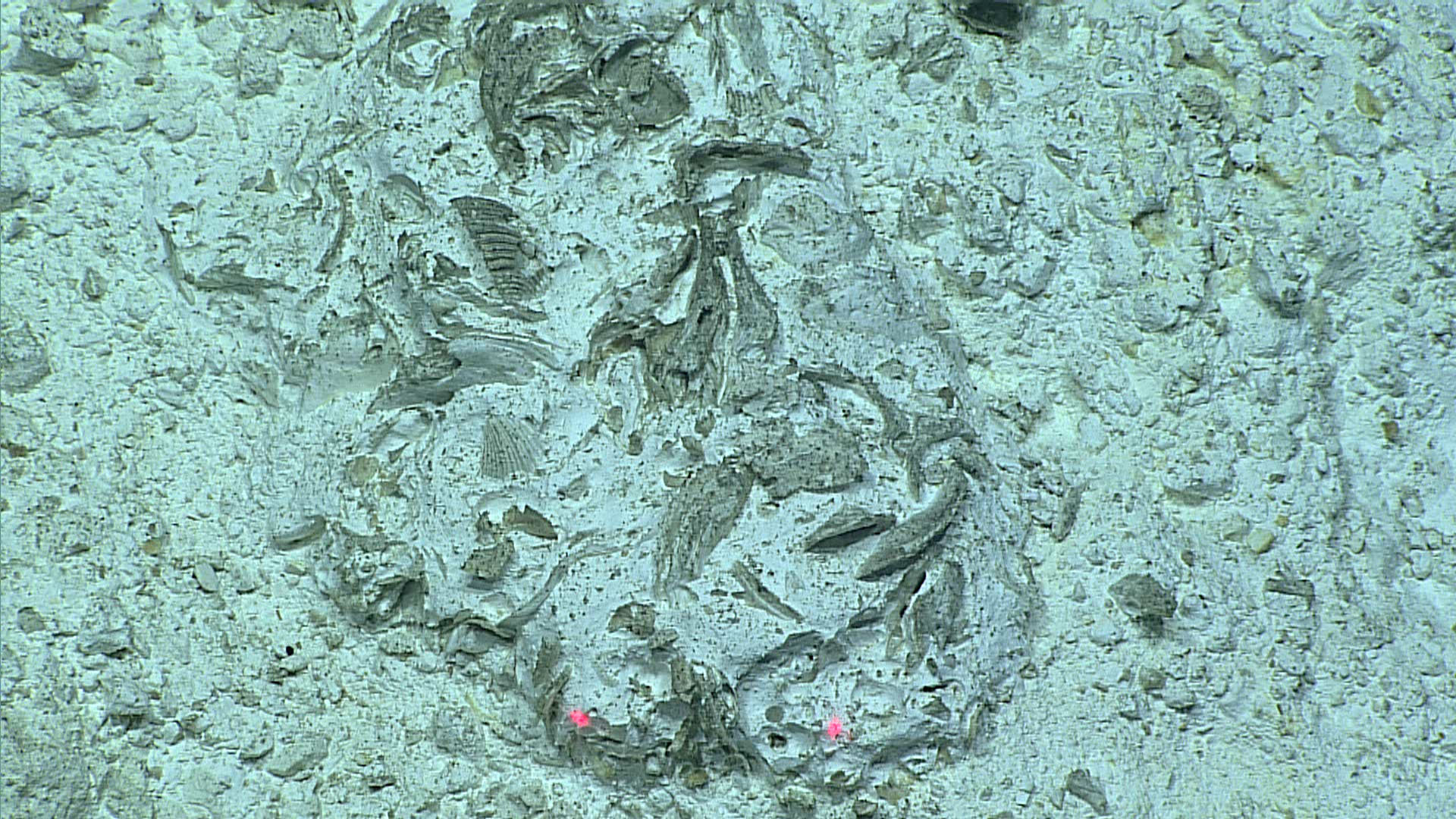
From the 2016 Deepwater Exploration of the Marianas expedition. This essay describes the life cycle of seamounts in the Pacific Ocean in relation to plate tectonics, from birth at a hotspot to death in a subduction zone.
Read more
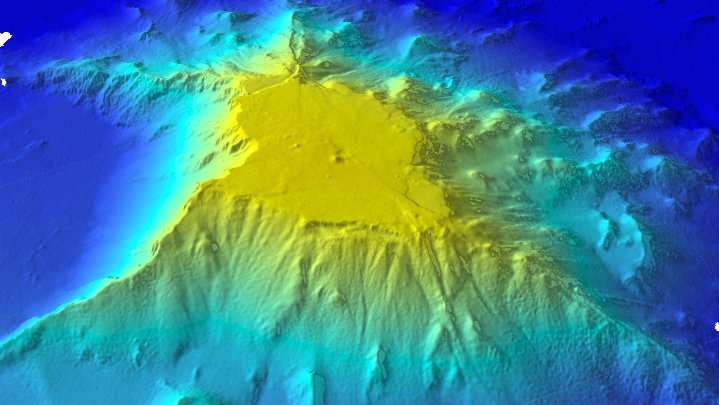
From the Deepwater Wonders of Wake expedition. Seamounts that erupt and grow to reach the surface have their conical tops flattened as a result of both erosion and coral reef growth. When these flat-topped seamounts eventually sink back down to deep water, they are called guyots.
Read more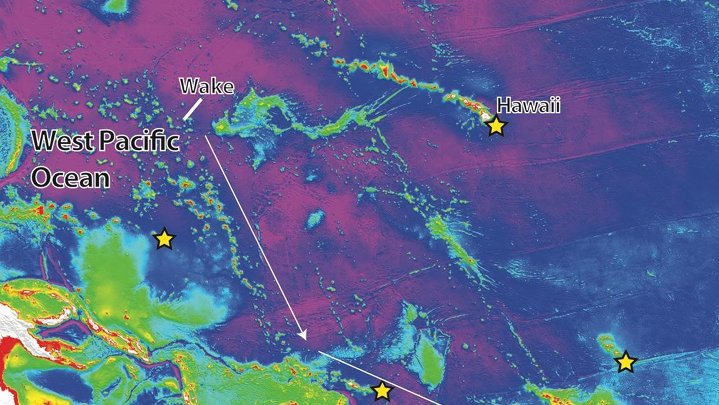
From the Deepwater Wonders of Wake expedition. The West Pacific Ocean is underlain by some of the oldest seafloor in the world, and it hosts a large number of submarine volcanoes, referred to as seamounts. These seamounts are typically formed by small extents of melting in the Earth's mantle, which may occur in several different geologic settings. In one of those settings, the so-called hotspots, a chain of volcanoes forms as the Earth's tectonic plates move over areas in the Earth's mantle that are thought to be anomalously hot.
Read more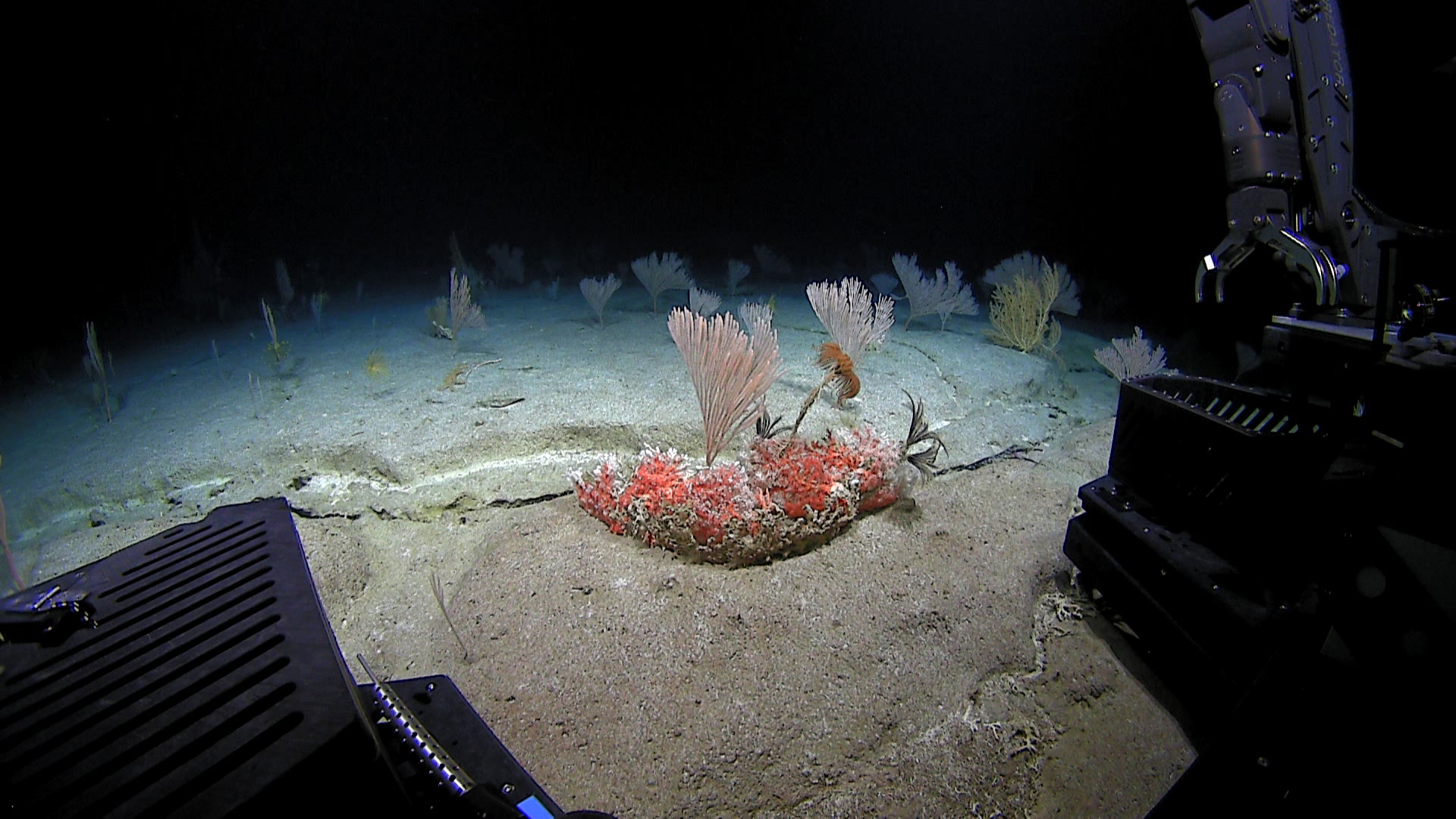
From the Deepwater Wonders of Wake expedition. This mission log explores the large circle of organism distribution and connection among the Mariana region, the Northwest Pacific, the East China Sea, and Japan.
Read more
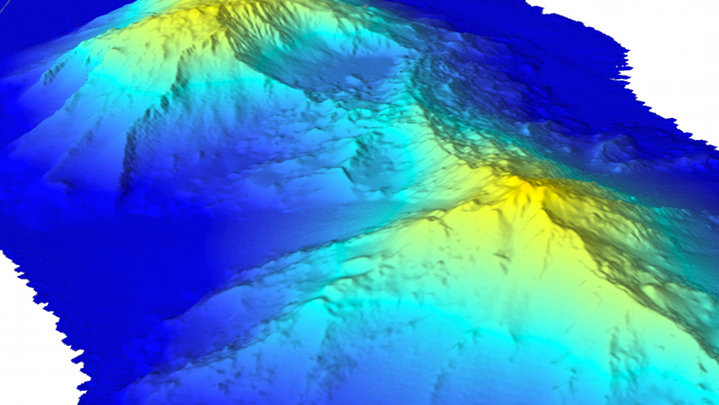
From the 2015 Hohonu Moana: Exploring Deep Waters off Hawaiʻi expedition. An overview of seamount age, geology and biological complexity by seamount expert, Dr. Les Watling.
Read moreThe above items are only a selection of the educational materials highlighting seamounts on our website.
View More